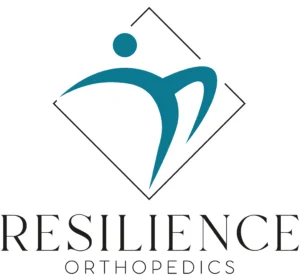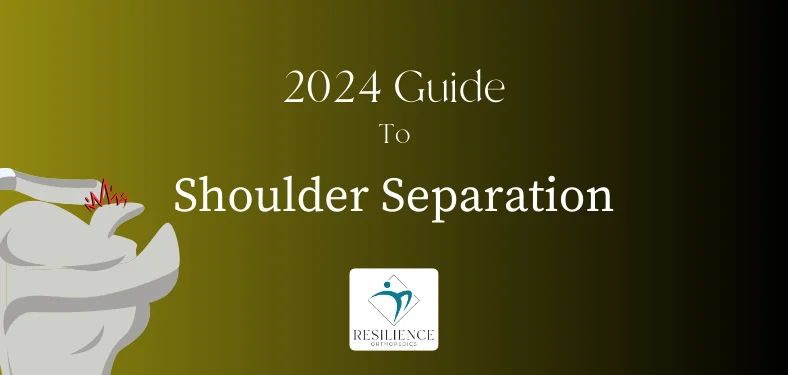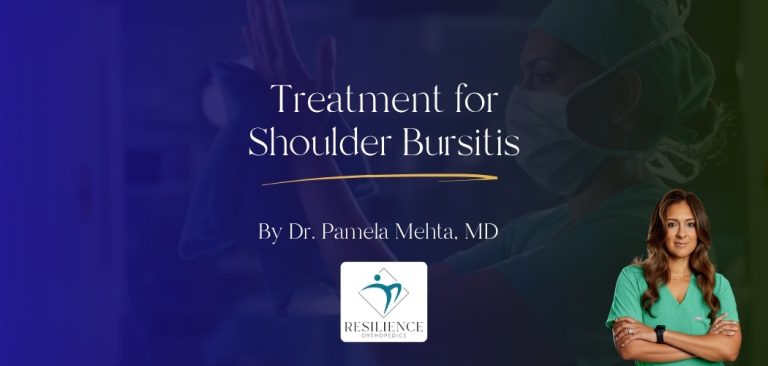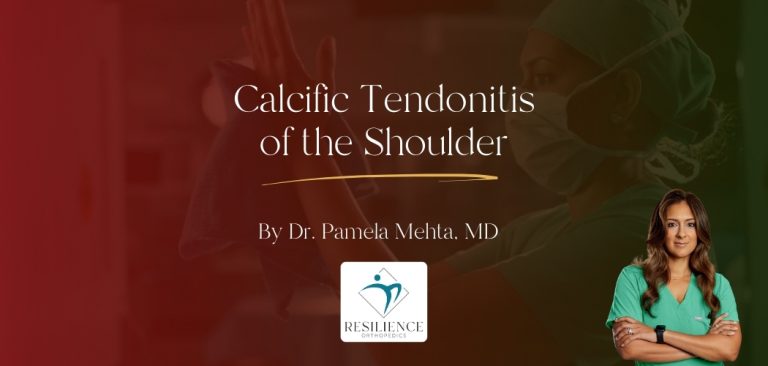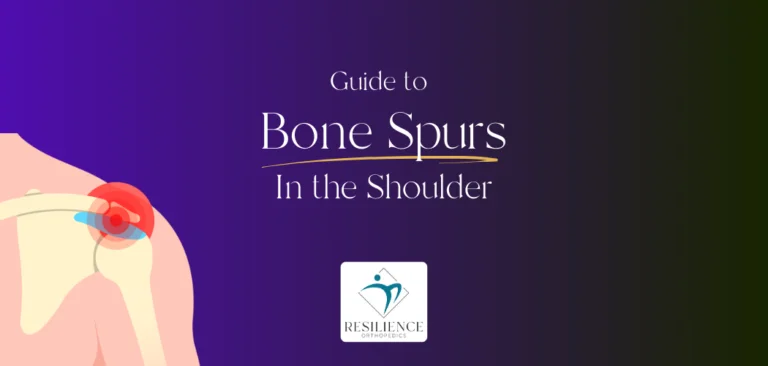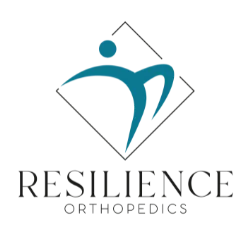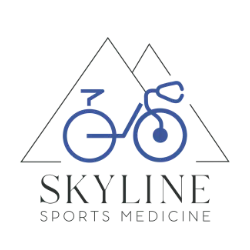Table of Contents
Shoulder injuries aren’t uncommon. Everyone can injure their shoulder, especially active people and athletes participating in contact sports.
A shoulder separation is one type of shoulder injury that deserves more attention. Read on to learn more about what it is and how long it takes to recover.
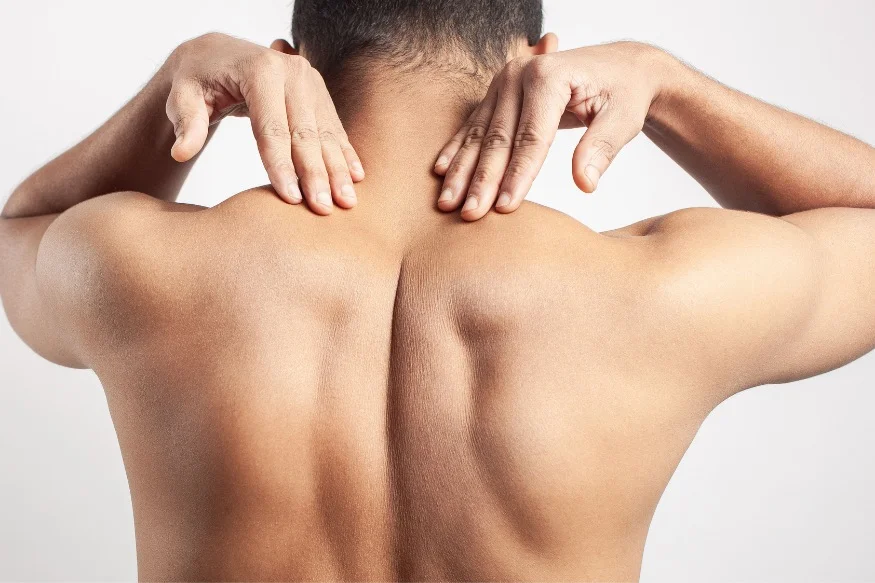
What is a Separated Shoulder?
Separated shoulder is a common injury that affects the acromioclavicular (AC) joint. This particular joint sits at the point where these bones meet:
- Collarbone (clavicle)
- A part of the shoulder blade (scapula)
The name acromioclavicular joint is a combination of clavicle and acromion, a small section at the highest point of the scapula.
This injury occurs when ligaments between the collarbone and shoulder blade are torn. Tearing of the ligaments loosens the connection between the joints of the two bones. When that happens, they separate causing shoulder pain and loss of mobility. The weight of the arm, e.g., during a fall, pushes the shoulder blade downward. As a result, a bump above the shoulder forms.
Interestingly, shoulder separation doesn’t involve the shoulder per se, and is different from shoulder dislocation. In dislocation, the shoulder joint itself is affected. In separation, the tearing of the ligament and separation of the bones don’t affect the joint of the shoulder.
Shoulder separation usually results from falling on the shoulder. The injury is common in people who participate in contact sports such as rugby or football. A direct blow to the shoulder and car accidents can lead to shoulder separation, too.
Evidence confirms that AC joint separation is particularly common in the young and active population. Although information regarding the incidence and prevalence of shoulder separation is quite scarce, estimates show that AC joint injuries account for 12% of all shoulder injuries.
Book a Consultation with Dr. Pamela Mehta, MD
The Best Orthopedic Surgeon in San Jose
Dr. Mehta is a board-certified orthopedic surgeon who can help you recover from your joint condition. If you:
- Are Suffering From Pain and Mobility Issues
- Need Orthopedic Assessment and Advice
- Want Treatment From a Top Orthopedic Doctor
We Can Help
Shoulder Separation Symptoms
Shoulder separation symptoms depend on the severity of the injury i.e., its grade. The grading of shoulder separation will be discussed further in this post. Symptoms of grade 1 are milder than symptoms of grade 3, for example.
In most cases, people with shoulder separation experience the following symptoms:
- Pain at the top of the shoulder
- Swelling
- Bruising of the affected area
- Tenderness upon touching the AC joint
- Limited range of motion
- Shoulder deformity e.g. a bump or bulge on the shoulder
- Collarbone poking out through the skin (rare)
- Popping sound during shoulder movement
- Instability or weakness in shoulder and arm
- Shoulder hanging lower than normal

Diagnosis
Diagnosis of AC separation shoulder includes the following:
A review of medical history: a shoulder doctor will ask you questions about the circumstances surrounding the injury. These questions are usually about how the injury occurred or the symptoms you’re experiencing.
Physical exam: your surgeon will perform a thorough examination of the shoulder. During the exam, they check for the presence of swelling, bruising, tenderness, or deformities. The doctor also evaluates the range of motion in your shoulder. To determine the severity of pain, the doctor may apply gentle pressure onto the affected area. This may hurt, but it’s necessary.
Imaging tests: ultrasound, X-ray, and MRI help doctors determine whether your injury is a fracture or separation. These imaging tests also show the severity of the injury so your doctor can tailor treatment properly. For better results, you may need to hold a weight in your hand during imaging tests. The added weight increases the visibility of shoulder deformity, thus making it easier to analyze.
After the completion of the physical exam and imaging tests, a doctor diagnoses shoulder separation. Then, they proceed to establish the grade or type of injury. The grading depicts the severity of separation. It’s important to establish the grade so that you can receive the most suitable treatment.
The doctor will also educate you on what is a separated shoulder and how to relieve pain.
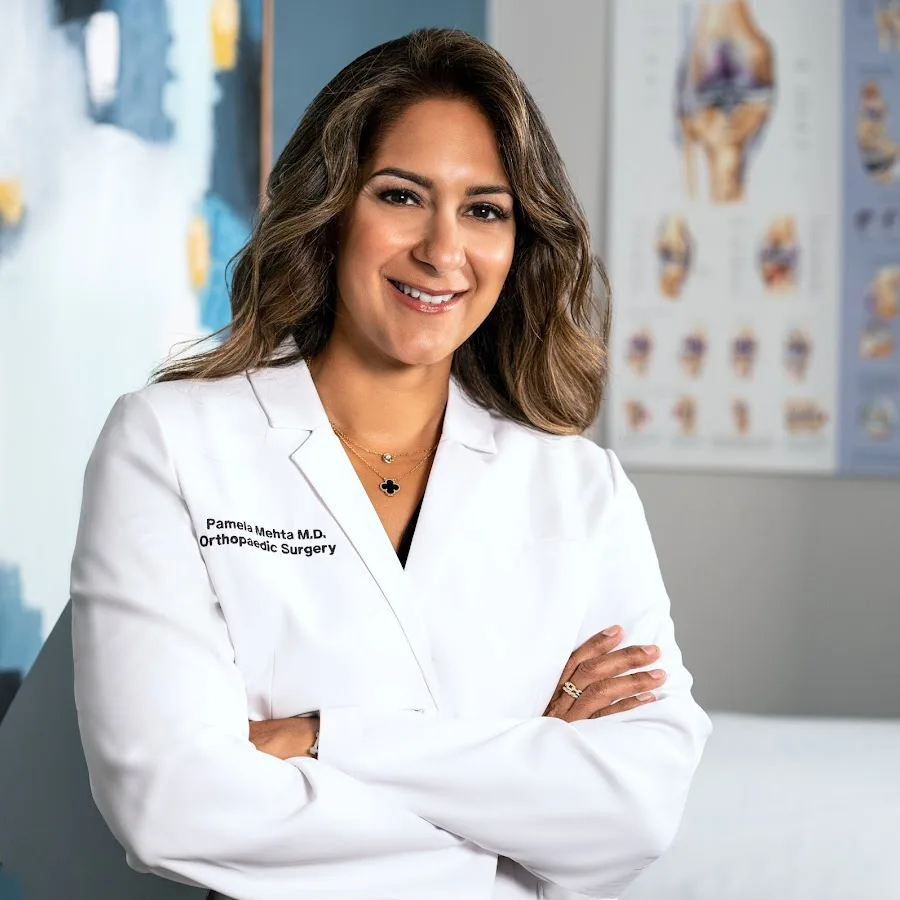
AC Joint Separation X-ray
Radiographs, such as X-rays, are usually the initial and only imaging test for suspected acromioclavicular conditions.
The X-ray relies on radiation to capture images of the bones in the shoulder. These images reveal the presence and severity of injuries. Here is an example of a normal x-ray (left) compared to a shoulder separation x-ray (right):


The main two findings that show a shoulder separation are:
- Increased coracoclavicular distance. This means that the distance between the coracoid process (see bottom arrows on gifs below) and the clavicle is increased.
- Widened AC Joint. This means the distance between the clavicle and the acromion (see top arrows on gifs below) is increased.
However, for a type 1 injury, the only finding may be soft tissue damage, which is subtle.
We’ve highlighted the differences between a normal (left) shoulder x-ray and an x-ray of an AC joint separation (right) below.
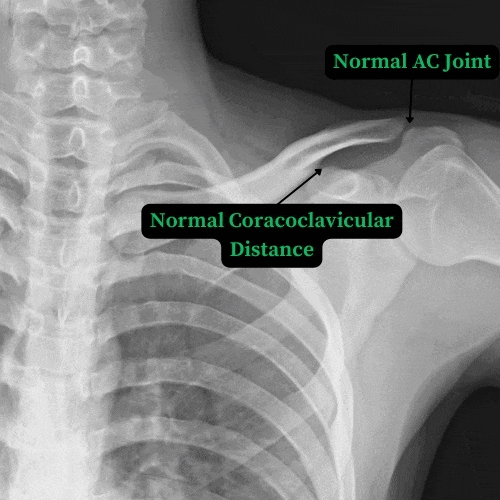
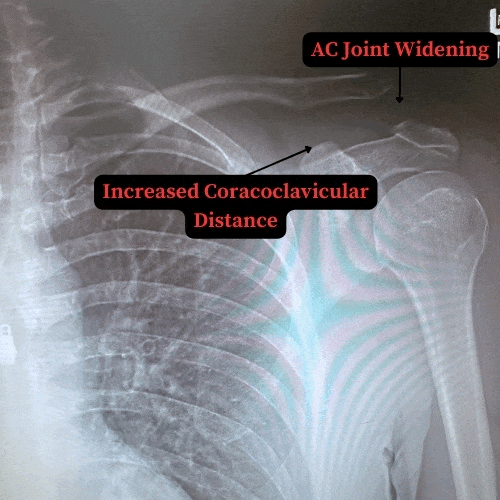
AC Shoulder Separation Grading
The diagnostic process involves AC shoulder separation grading. As seen above, grading is based on the severity of injury. The grading system used today is known as the Rockwood classification.
The Rockwood classification is named after Dr. Charles A. Rockwood, Jr. a renowned orthopedic surgeon and researcher who dedicated his career to the field of orthopedics. Dr. Rockwood focused primarily on shoulder injuries. He developed a classification system to categorize and describe the severity of AC joint injuries.
The original grading system consisted of three grades. But Rockwood classification includes six types i.e., six levels of grading or severity.
To determine the grade of injury, it may be necessary to image both the injured and normal side.
Below, we are going to focus on the three most common grades of shoulder separation.
Grade 1 Shoulder Separation
Grade 1 shoulder separation is a mild injury where the ligaments of the AC joint are stretched out, but not torn. This level of injury may involve slight tenderness. Swelling is usually minimal. Grade 1 injury doesn’t feature visible deformity. The shoulder remains stable.
Grade 1 injury is the most common form of shoulder separation. Radiographic images show that the AC ligament has a mild sprain, while the joint capsule, deltoid muscle, trapezius muscle, and CC (coracoclavicular) ligament of the shoulder are all intact.
Since grade 1 injuries are mild, they’re easy to treat. Patients tend to achieve recovery quickly. Treatment may include rest, ice, and sometimes an arm sling. Over-the-counter pain relievers such as ibuprofen (Advil) or acetaminophen (Tylenol) can alleviate pain.
You may also need to avoid activities that put a lot of pressure or tension on the shoulder. These include:
- Overhead reaching
- Reaching across the chest
- Leaning on the elbows
- Lifting
- Sleeping on the injured shoulder
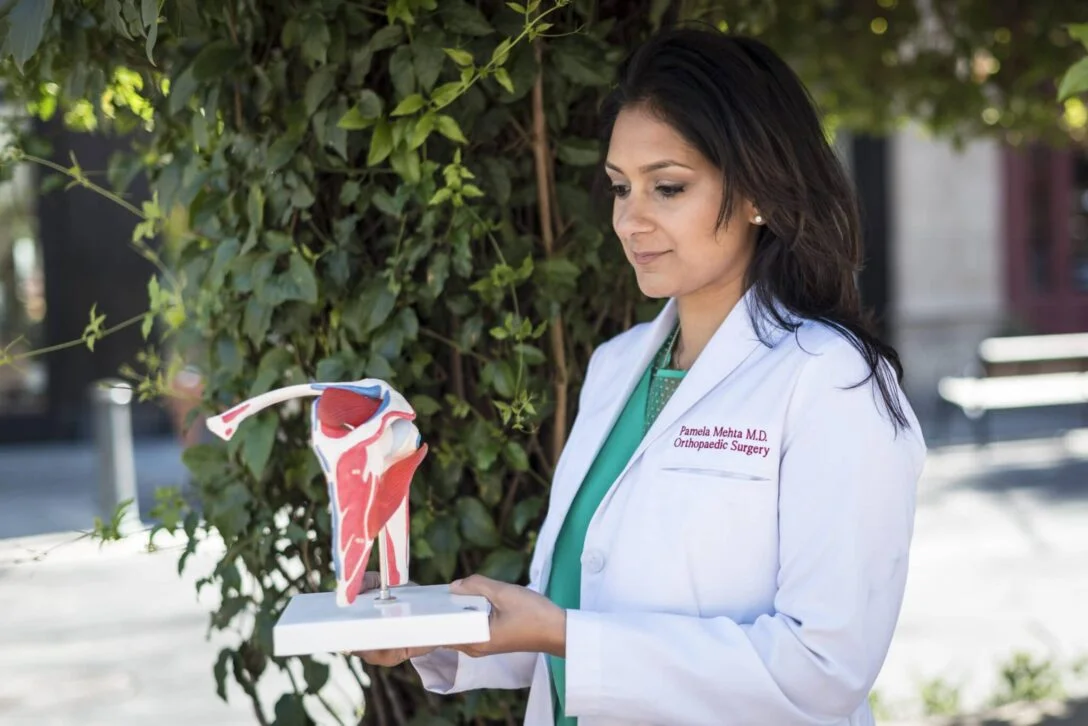
Grade 2 Shoulder Separation
Grade 2 shoulder separation is a moderate injury with a partial tear of the ligaments in the AC joint. A person with a grade 2 injury may experience more noticeable symptoms. These include increased pain and swelling. Some loss of shoulder function may be present too.
Injury of this grade usually features a slight displacement of the collarbone. As a result, a patient may notice a visible bump on top of their shoulder.
In this case, displacement of the collarbone usually goes unnoticed during a physical exam. This further shows the importance of imaging tests in the diagnostic process.
An X-ray of the grade 2 injury will show AC joint widening of more than 7mm with an elevation of less than 25%. The AC ligament and joint capsule are ruptured, and the CC ligament is sprained. The deltoid and trapezius muscles are minimally detached.
Treatment and recovery of grade 2 injury is similar to that of grade 1. You will need rest, pain medication, and ice. You will need to wear a sling for shoulder immobilization for three to seven days.
When pain becomes tolerable, you can start with shoulder exercises to increase your range of motion. During this time, it’s useful to avoid activities that put too much pressure on the shoulder.
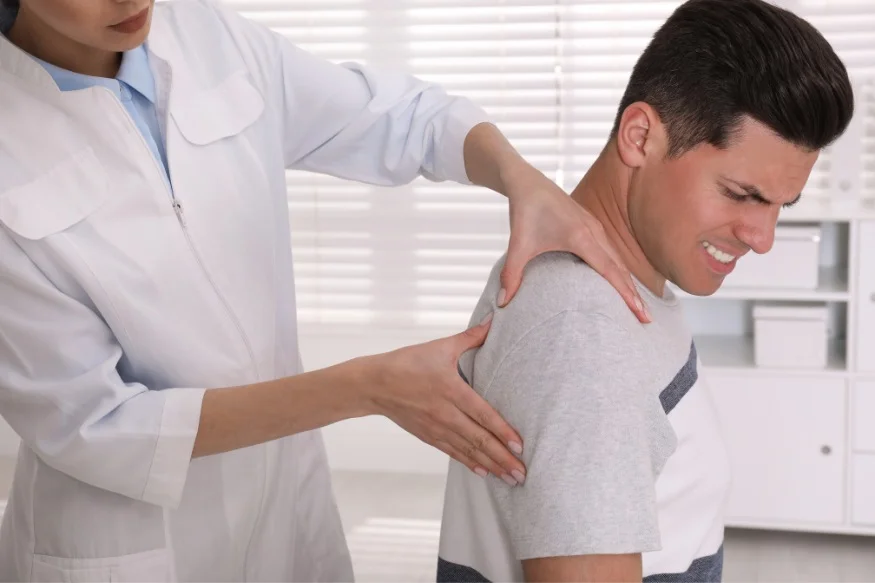
Grade 3 Shoulder Separation
Grade 3 shoulder separation is a severe injury with a complete tear of the ligaments that support the AC joint. These injuries cause intense pain, swelling, and visible deformity. Displacement of the collarbone is easily noticeable during a physical exam. People with this type of shoulder separation notice their range of motion is significantly limited. Their shoulder feels very unstable too.
The X-ray images of the grade 3 injury show that the shoulder blade is elevated above the superior border of the acromion. However, the CC ligament distance is <25mm or less than twice normal. The joint capsule, AC ligament, and CC ligament are all ruptured. At the same time, the deltoid and trapezius muscles are detached.
Although severe, grade 3 injuries can be managed without surgery. The treatment process is similar to that of the other two grades, but progression is slower. That means ice, medications, rest, and immobilization are necessary. A person with a grade 3 injury may need to wear a sling for three to four weeks. A patient can start with a range of motion exercises as soon as they can tolerate them.
As mentioned above, there are six grades of shoulder separation. However, the first three grades are the most common. Grades 4-6 are uncommon. They tend to result from a high-energy injury and require surgical treatment.
Grades 4-6
In grades 4-6 separations, the ligaments holding the clavicle and acromion together tear significantly. These classifications are rare.
Grade 4: The collarbone is displaced backward by more than an inch.
Grade 5: Similar to grade 4, but with an elevation of the clavicle causing a noticeable bump.
Grade 6: The most severe, where the collarbone is pushed under the shoulder blade.
Non-surgical treatment is still usually used for grades 4-5 separations, but for grade 6, shoulder surgery often becomes necessary.
Ready to Recover?
Take the first step in getting back to your normal self, and book an appointment with Dr. Mehta today.
We’re ready when you are!
Shoulder Separation Recovery Time
Separated shoulder recovery time depends on the severity or grade of the injury. Mild injuries heal within weeks. More serious injuries recover within a few months.
Recovery Time Without Surgery: up to 12 weeks
Most people recover within two to 12 weeks without surgery. General recovery times for different grades of shoulder separation are:
- Grade 1: one to two weeks
- Grade 2: two to four weeks
- Grade 3: between six and 12 weeks
Although most people can recover without surgery, others may need it. Surgery may be necessary for severe injuries. Recovery can be a lengthy process.
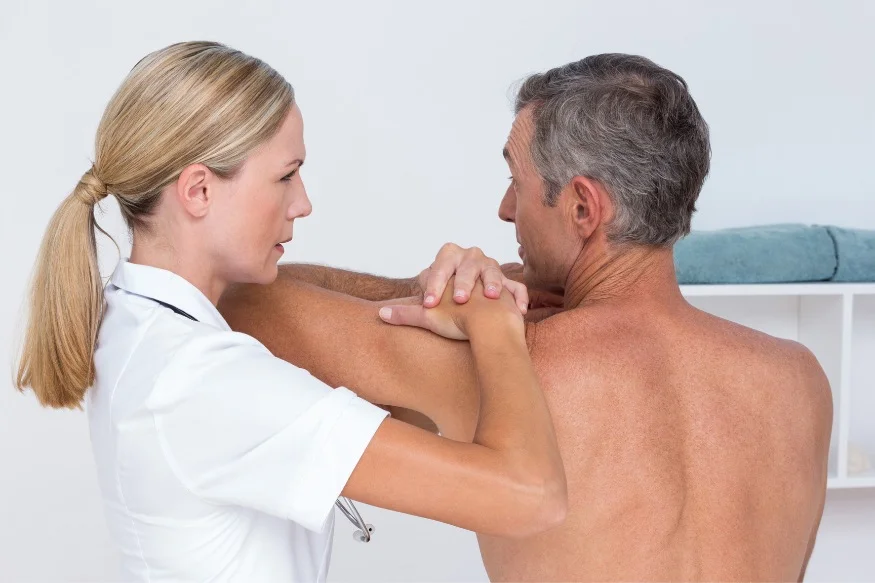
AC joint surgery recovery time: up to 6 weeks
Typically, patients recover in four to six months after surgery. However, recovery time may vary from one patient to another. Factors such as overall health, underlying conditions, and complications affect recovery time.
No heavy lifting: up to 6 weeks
Recovery after shoulder separation calls for avoiding putting too much pressure on the injured area. Whether a patient undergoes surgery or not, they need to avoid heavy lifting. Ideally, you should avoid lifting anything heavier than 5 pounds for six weeks.
Return to work: 13 weeks
Return to work depends on recovery progression. In one study, subjects returned to work after 13 weeks. However, they did experience symptoms in the injured shoulder. The type of job determines when you can work, too. People with physically demanding jobs need a longer recovery time.
Return to sports activities: up to 6 months
It may take four to six months for athletes to regain full function in their shoulders. Physical therapy is important for the recovery process, especially in athletes. It improves the range of motion, flexibility, and function of the affected area.
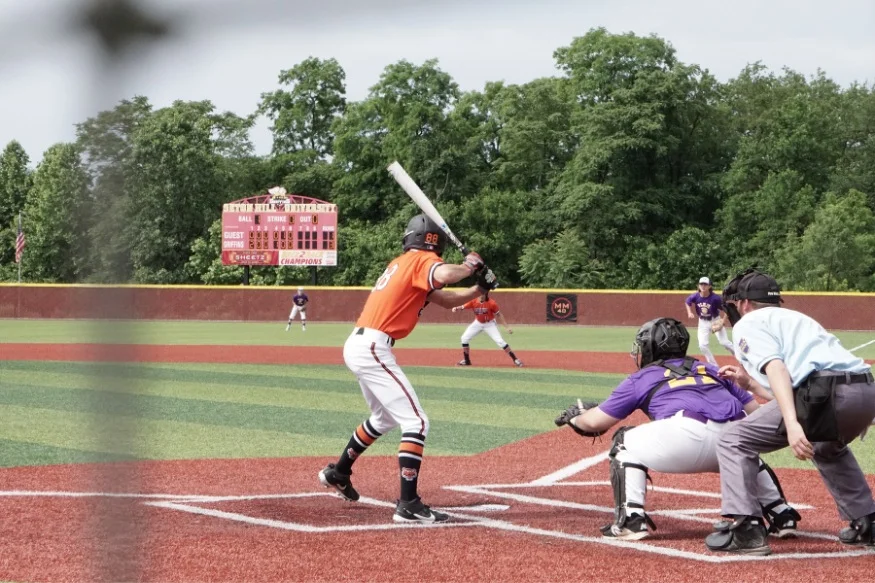
Conclusion
A shoulder separation is quite common in athletes and young people. The injury can cause pain, swelling, and deformity. It’s important to see a doctor and adhere to the treatment recommendations. You can achieve successful recovery if you stick to the treatment program.
